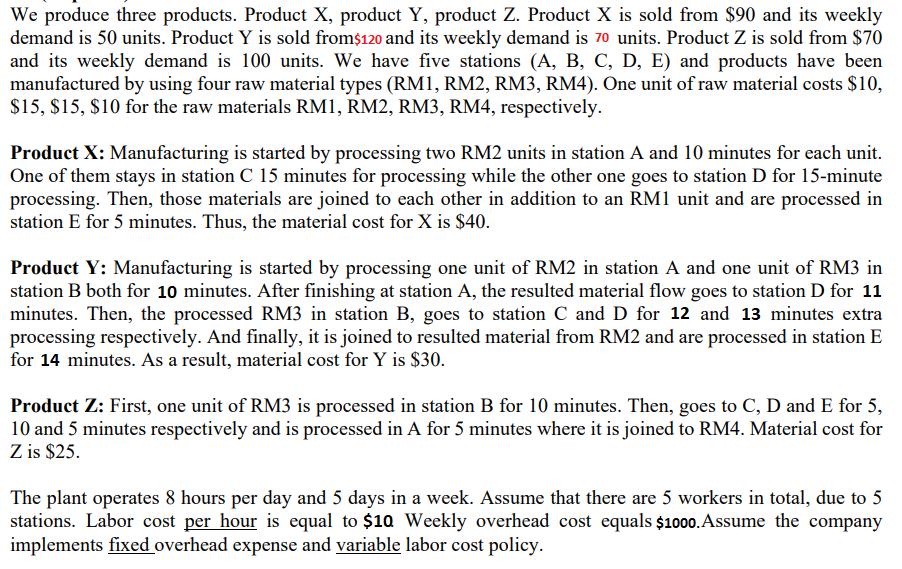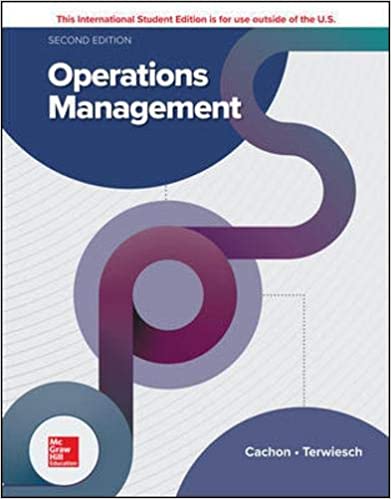Question
According to the theory of constraints question information given above; a) Compute the workload of workstations and find the bottleneck workstation(s). b) Compute unit profits,

According to the theory of constraints question information given above;
a) Compute the workload of workstations and find the bottleneck workstation(s).
b) Compute unit profits, unit contribution margin per minute at the bottleneck workstation(s). Find the best product mix (How many units are to be produced from each product type?) and the corresponding weekly profit for the plant by using a bottleneck-based approach.
Use the following tie-breaker rule if necessary: Tie-breaker rule: If there is a tie between two products in the product mix stage, always prefer the product that comes first in the alphabet. (For instance, if there is a tie between X and Y, then X is preferable to Y)
We produce three products. Product X, product Y, product Z. Product X is sold from $90 and its weekly demand is 50 units. Product Y is sold from$120 and its weekly demand is 70 units. Product Z is sold from $70 and its weekly demand is 100 units. We have five stations (A, B, C, D, E) and products have been manufactured by using four raw material types (RM1, RM2, RM3, RM4). One unit of raw material costs $10, $15, $15, $10 for the raw materials RM1, RM2, RM3, RM4, respectively. Product X: Manufacturing is started by processing two RM2 units in station A and 10 minutes for each unit. One of them stays in station C 15 minutes for processing while the other one goes to station D for 15-minute processing. Then, those materials are joined to each other in addition to an RM1 unit and are processed in station E for 5 minutes. Thus, the material cost for X is $40. Product Y: Manufacturing is started by processing one unit of RM2 in station A and one unit of RM3 in station B both for 10 minutes. After finishing at station A, the resulted material flow goes to station D for 11 minutes. Then, the processed RM3 in station B, goes to station C and D for 12 and 13 minutes extra processing respectively. And finally, it is joined to resulted material from RM2 and are processed in station E for 14 minutes. As a result, material cost for Y is $30. Product Z: First, one unit of RM3 is processed in station B for 10 minutes. Then, goes to C, D and E for 5, 10 and 5 minutes respectively and is processed in A for 5 minutes where it is joined to RM4. Material cost for Z is $25. The plant operates 8 hours per day and 5 days in a week. Assume that there are 5 workers in total, due to 5 stations. Labor cost per hour is equal to $10 Weekly overhead cost equals $1000. Assume the company implements fixed overhead expense and variable labor cost policy.
Step by Step Solution
There are 3 Steps involved in it
Step: 1
Step 1 Workload for each station is determined by calculating the SUMPRODUCT of weekly demand of each product multipled by the processing time require...
Get Instant Access to Expert-Tailored Solutions
See step-by-step solutions with expert insights and AI powered tools for academic success
Step: 2

Step: 3

Ace Your Homework with AI
Get the answers you need in no time with our AI-driven, step-by-step assistance
Get Started


